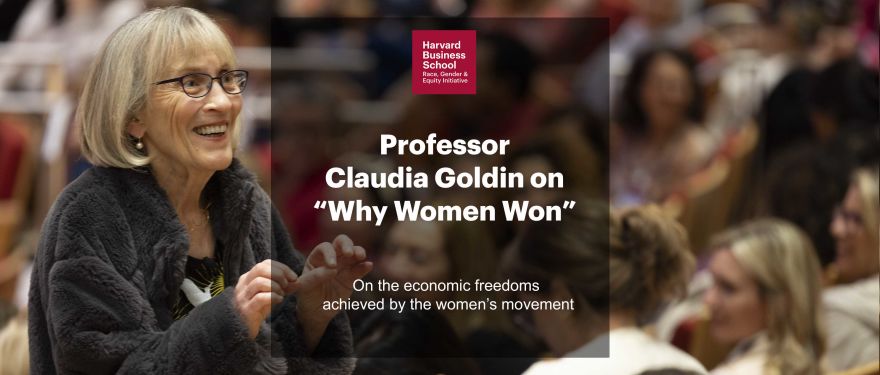During Women’s History Month, it’s become a tradition for the Race, Gender and Equity Initiative to reflect on how far women have come, and how far there is still have yet to go, especially against the backdrop of shifting social and political landscapesAs gender equity scholars, the moment is ripe for us to delve into research that illustrates the state of working women today. Harvard’s own Professor Claudia Goldin won the 2023 Nobel Prize in Economics for her lifetime of work on gender dynamics and women’s outcomes in the labor market over decades of shifting working conditions. In November, at the 2024 HBS Women’s Leadership Summit, Professor Goldin presented her research on how the women’s movement in the United States led to today’s economic and financial freedoms (pdf) (i.e. what women “won” and how we won it). This look at the past gave us necessary insight into the forces that brought us to this moment, and what we can learn in order to continue our struggle toward an equitable world.
How movements worked together: civil rights and women’s liberation
Professor Goldin astutely opened her presentation with a reminder of how recently women were restricted in their rights and freedoms. Even as women entered the white-collar workplace in the latter half of the 20th century, harassment, discrimination, and financial limitations were commonplace. Personal financial independence for married women, such as having a bank account or opening a credit card, was conditional upon their husband’s approval. The types of rights fought for and gained could be, then, broken down into four categories: workplace, economic/social (such as rights in education and marriage), political, and “own body” rights.
Of the “155 critical moments in women’s rights history in the U.S., compiled from 1905 to 2023, 45% occurred between 1963 and 1973,” when the Civil Rights Act and associated legislation (such as the Equal Rights Amendment) were passed. This decade also saw SCOTUS decisions that gave us integrated schools and individual rights like interracial marriage and abortion.
This extremely critical period of time saw concurrent movements leading to periods of great change and major wins for groups seeking liberation. This convergence is often a result of common interests and cross-pollination of tactics and strategies for effective organizing, leading to greater momentum.
Re-emerging traditionalism: a pattern of progress and backlash
As women’s liberation movements grew, so did reactionary movements, often also led by women. Feminism became a dominant term and identity for those who believed in equality, but traditionalists maligned this term, often adopting a variation of “anti-feminism.” We can observe this pattern over the last five to six decades of progress as each right gained is often met with an opposing force. The Roe v. Wade decision prompted the establishment of the pro-life movement, as one example. As our current political moment can attest, the last decade of gains for LGBTQ+, women’s, and racial minorities’ movements were bound to receive a reaction from counter-forces. Knowing this pattern, how can we adjust our awareness and approach to better understand the obstacles presented by heterogeneity in oppressed groups?
Why is feminism still so polarizing?
The demonization of the term “feminism” persists, as many who believe in equality still hesitate to identity with it. The reactionary strategy that associated the term with counterculture, radicalism, and an affront to traditional American values has had a lasting effect. Many similar cultural trends have arisen, and today’s conservative-leaning young people and popular far-right media channels are a sign that Professor Goldin’s research is more timely than ever.
Some important phenomena that shape these trends are as follows:
- Why is it so hard to sustain a women’s movement?
- Professor Goldin’s historical analysis showed that ideological divisions between women were far more significant than even those between men and women.
- Women are difficult to mobilize, representing half of the global population and being incredibly diverse across intersections and experiences. Such a vast group cannot be aligned on everything, and many of the core issues women deal with suffer from messaging that may fail to resonate with everyone.
- Visibility: Once any marginalized group gains rights, it’s easy to lose sight of the need to organize. Many women feel that they are not oppressed, and they don’t see their place in society as subservient, but rather as stewards of home and family life.
- Married women, for example, had (and perhaps still have) a lesser stake in rights that might affect unmarried women disproportionately. From reproductive freedom to workplace safety, many women’s issues enable people to have the choice to be single freely, a choice that often doesn’t appeal to “traditional” women. The latter group often even falls to the political right of many men when it comes to values and beliefs.







